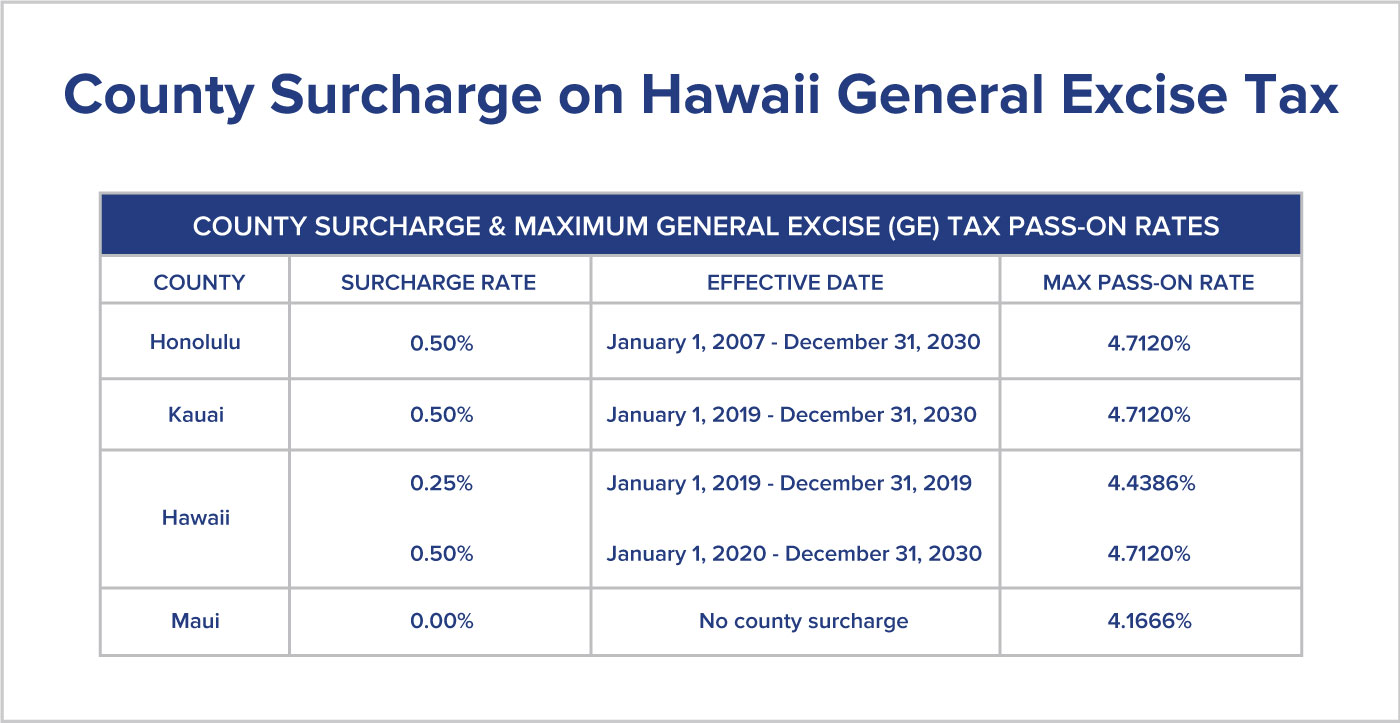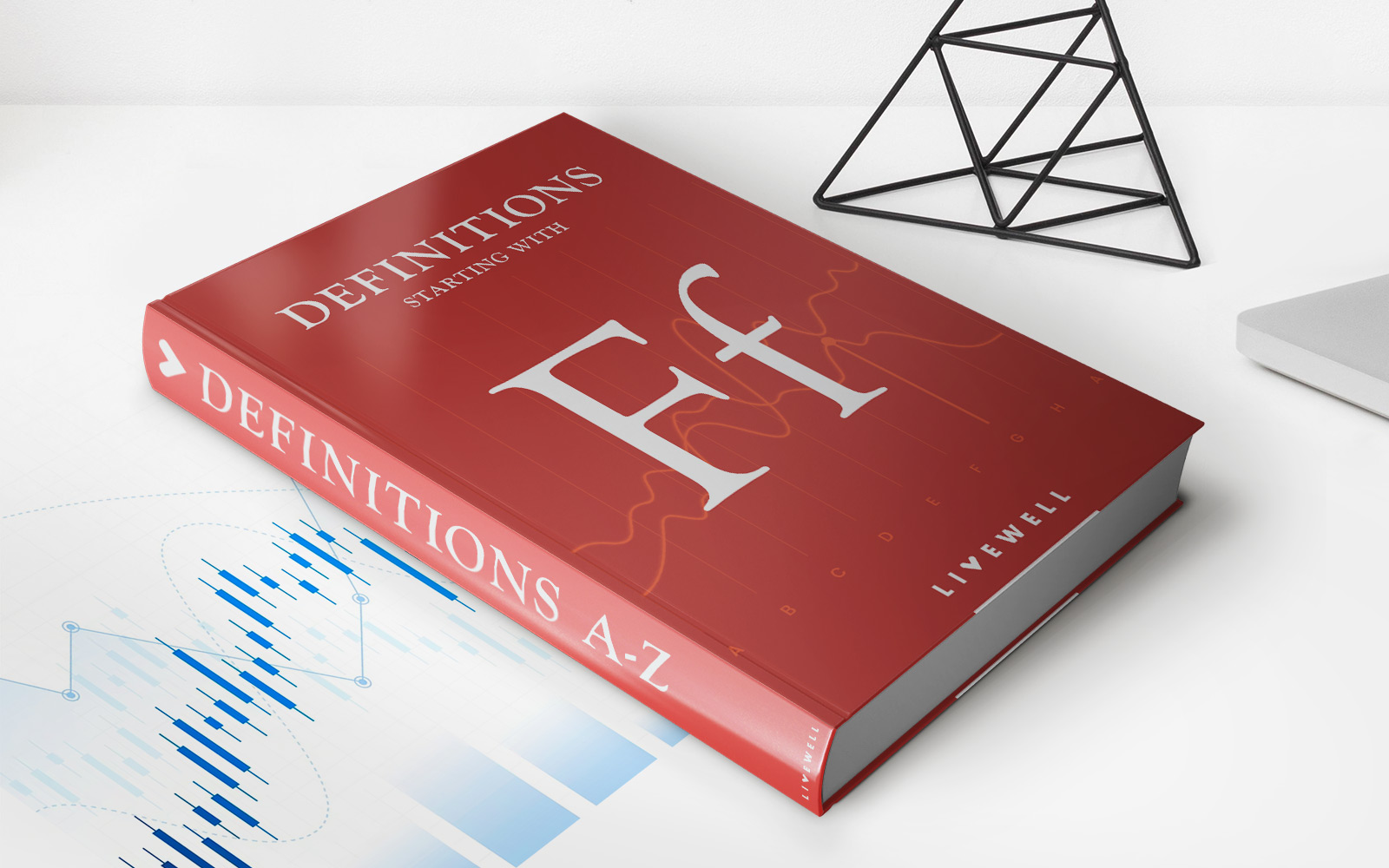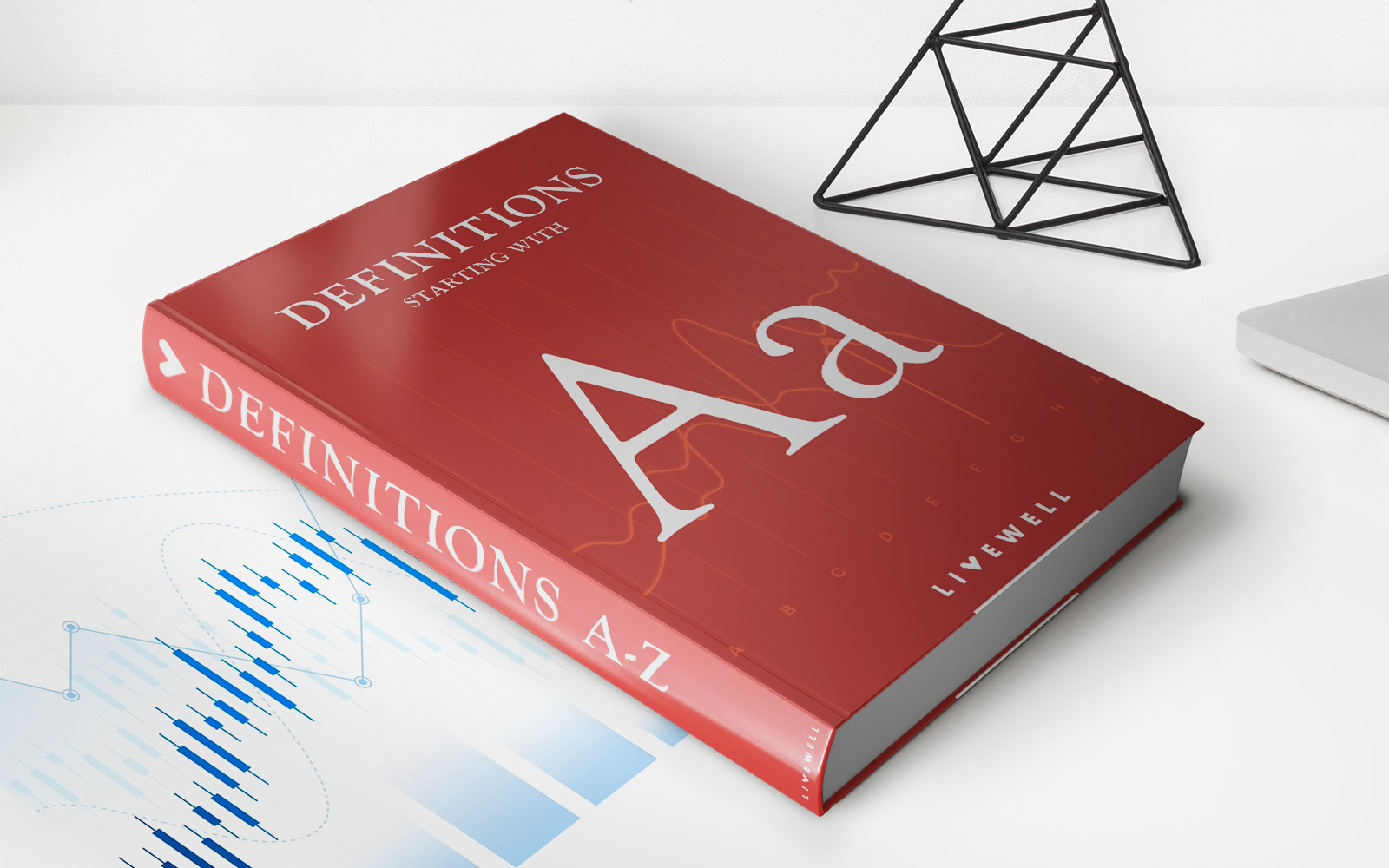

Finance
How To Report 1099-Q On Tax Return
Published: October 29, 2023
Learn how to report 1099-Q on your tax return and manage your finances effectively. Get expert tips and guidance for handling 1099-Q forms.
(Many of the links in this article redirect to a specific reviewed product. Your purchase of these products through affiliate links helps to generate commission for LiveWell, at no extra cost. Learn more)
Table of Contents
Introduction
Welcome to our comprehensive guide on how to report 1099-Q on your tax return. If you’ve received a Form 1099-Q, you may be wondering what it is and how it affects your tax filing. Well, you’ve come to the right place! In this article, we will explain what Form 1099-Q is, demystify its components, and provide you with a step-by-step guide on how to report it on your tax return.
Form 1099-Q is a tax document issued by educational institutions and certain financial institutions. It is used to report withdrawals made from tax-advantaged education savings accounts, such as qualified tuition programs (QTPs) or Coverdell Education Savings Accounts (ESAs). These withdrawals, also known as distributions, can include both principal and earnings.
Understanding how to properly report 1099-Q on your tax return is crucial to ensure accurate tax filing and to avoid potential penalties or audits. By following our step-by-step guide, you’ll gain the confidence and knowledge needed to navigate through this process effectively.
It’s important to note that tax laws are subject to change and can be complex. While we strive to provide accurate and up-to-date information, we recommend consulting a tax professional or using tax software to ensure your specific circumstances are accounted for.
Now, let’s dive into the details and demystify the world of Form 1099-Q!
What is Form 1099-Q?
Form 1099-Q is a tax document that is used to report distributions from education savings accounts. It is typically issued by educational institutions or financial institutions that manage these types of accounts, such as qualified tuition programs (QTPs) or Coverdell Education Savings Accounts (ESAs).
The purpose of Form 1099-Q is to provide information to both the recipient of the distribution and the Internal Revenue Service (IRS). It details the amount of the distribution, as well as any earnings that may be taxable. The recipient of the distribution will use this information to report it on their tax return, while the IRS will use it to ensure compliance with tax laws.
There are several types of distributions that may be reported on a Form 1099-Q. The most common types include:
- Qualified Education Expenses: These are expenses incurred for education and are generally tax-free. They include tuition, fees, books, supplies, and equipment required for enrollment or attendance at an eligible educational institution.
- Non-Qualified Distributions: These are distributions that are not used for qualified education expenses and may be subject to taxation. Non-qualified distributions can include funds used for living expenses, transportation, or other non-educational purposes.
- Rollovers: These are transfers of funds from one education savings account to another. Rollovers are not taxable if done within a certain time frame and meet specific requirements.
- Excess Contributions: These are contributions made to an education savings account that exceed the allowed limits. Excess contributions may be subject to additional taxes or penalties.
It’s important to note that Form 1099-Q is not applicable for distributions from certain tax-free educational savings accounts, such as 529 plans. Instead, these types of distributions are typically reported directly by the account holder on their tax return.
Now that we have a clearer understanding of what Form 1099-Q is, let’s move on to understanding its components and how to report it on your tax return.
Understanding 1099-Q
Before we delve into the process of reporting 1099-Q on your tax return, it’s important to have a solid understanding of the different components of the form. This will help you navigate through the reporting process more effectively and ensure accuracy in your tax filing.
Let’s break down the key elements of the 1099-Q form:
- Payer Information: This section of the form includes the name, address, and identification number of the institution responsible for issuing the 1099-Q. Make sure to review this information for accuracy and notify the payer if there are any errors.
- Recipient Information: This section includes your name, address, and identification number, along with any other relevant information such as your account number.
- Account Information: Here, you will find details about your education savings account, including the account number and account type (e.g., QTP or ESA).
- Distribution Information: This is perhaps the most important section of the form. It provides a breakdown of the distributions made from your education savings account, including the total amount of the distribution and any earnings that may be taxable. Pay close attention to this section to accurately report the information on your tax return.
- Education Expenses: If the distribution was used for qualified education expenses, this section will provide details of the expenses paid with the funds. This helps determine whether the distribution is taxable or tax-free.
- Additional Information: This section may contain any other relevant information related to the distribution, such as rollover contributions or excess contributions.
By familiarizing yourself with these key components, you will be better equipped to understand and interpret the information provided on the 1099-Q form. This will ensure that you report your distributions accurately and comply with tax regulations.
Now that we have a solid understanding of what Form 1099-Q entails, let’s move on to the step-by-step process of reporting it on your tax return.
Step-by-Step Guide to Reporting 1099-Q on Tax Return
Reporting Form 1099-Q on your tax return may seem daunting, but with a clear understanding of the process, it can be easily navigated. Follow these step-by-step instructions to ensure you accurately report your 1099-Q distributions on your tax return:
Part I: Gathering Information
- Review your 1099-Q Form: Carefully examine your 1099-Q form and verify that all the information is correct. Check for any discrepancies in the payer and recipient information, account details, distribution amounts, and education expenses.
- Organize supporting documents: Gather any receipts or documentation related to the educational expenses paid with the distributions. This will serve as evidence to support the tax treatment of the distribution.
- Understand the tax-free or taxable status: Determine whether your distributions qualify as tax-free or taxable. Tax-free distributions are those used for qualified education expenses, while taxable distributions are those used for non-qualified expenses.
Part II: Reporting 1099-Q on Form 1040
- Complete Form 1040: Start by filling out your Form 1040, the standard individual income tax return form used by most taxpayers.
- Locate the appropriate section: Look for the section on the Form 1040 that corresponds to reporting education savings account distributions. This section may vary depending on the version of the tax form you are using.
- Enter total distributions: Report the total amount of distributions from your 1099-Q form in the designated field. Ensure you enter the correct amount to avoid discrepancies or potential audits.
- Report taxable distributions: If you have any taxable distributions, report the taxable amount in the appropriate section of your Form 1040. This amount is generally the earnings portion of the distribution.
- Claim tax-free distributions: If you have tax-free distributions that were used for qualified education expenses, you will not need to report them as income on your tax return.
- Attach Form 1099-Q: Keep a copy of your Form 1099-Q for your records and attach it to your tax return when filing.
Part III: Additional Considerations
- Consult a tax professional: If you have complex circumstances or are unsure about how to report your 1099-Q, seek advice from a tax professional. They can provide personalized guidance and ensure your tax return is accurate.
- Use tax software: Consider utilizing tax software to guide you through the reporting process. These tools often have built-in prompts and calculations to simplify the process.
- Keep records: Maintain copies of your Form 1099-Q, receipts, and any other relevant documentation for at least three years. These records may be requested in the event of an IRS audit.
By following these step-by-step instructions, you’ll be well-prepared to report your 1099-Q on your tax return. Remember, accuracy and attention to detail are key to successful tax filing.
Now, armed with this knowledge, you can confidently tackle the task of reporting your 1099-Q distributions and fulfill your tax obligations.
Part I: Gathering Information
Before you begin reporting your 1099-Q on your tax return, it’s essential to gather all the necessary information to ensure accurate reporting. This will help you avoid errors and potential issues with the IRS. Here are the key steps to follow in this part of the process:
- Review your 1099-Q form: Start by carefully reviewing your 1099-Q form. Double-check the personal information, including your name, address, and taxpayer identification number (TIN). Verify that the payer’s information is accurate as well.
- Verify account details: Ensure that the account information provided on the 1099-Q form, such as the account number and account type (QTP or ESA), matches your records.
- Check distribution amounts: Review the distribution amounts reported on Form 1099-Q. Confirm that the total distribution amount listed is correct and matches your records. Additionally, take note of any taxable earnings included in the distribution.
- Inspect reported education expenses: If the form includes information about the educational expenses paid with the distribution, review it carefully. Make sure the expenses are accurately recorded and supported by your documentation.
- Organize supporting documents: Gather all relevant documents related to your educational expenses and distribution transactions. This may include receipts, invoices, bills, and any other documentation that verifies the qualified education expenses you paid using the distribution funds.
- Understand the tax implications: Determine whether your distributions qualify as tax-free or if any portion is potentially taxable. Generally, distributions used for qualified education expenses are tax-free, while the earnings portion of non-qualified distributions may be taxable.
By taking the time to gather and review the necessary information, you can ensure accuracy when reporting your 1099-Q on your tax return. It’s crucial to cross-reference the information on the form with your own records and documentation to avoid any discrepancies.
Keep in mind that the IRS may request supporting documents to verify your education expenses and the tax treatment of your distributions. Therefore, it is important to maintain these records for at least three years after filing your tax return.
Now that we have gathered all the necessary information, we can move on to the next step: reporting your 1099-Q on your tax return.
Part II: Reporting 1099-Q on Form 1040
Now that you have gathered all the necessary information, it’s time to report your 1099-Q on your Form 1040, the standard individual income tax return form. Follow these steps to ensure accurate reporting:
- Start filling out Form 1040: Begin by filling out the necessary sections of Form 1040, including your personal information and other income details.
- Find the appropriate section: Locate the section on Form 1040 that corresponds to reporting education savings account distributions. This section may vary depending on the version of the tax form you are using.
- Enter the total distributions: Report the total amount of distributions you received from your 1099-Q in the designated field. This total should include both the principal amount and any taxable earnings.
- Report taxable distributions: If any portion of your distributions is taxable, report the taxable amount in the relevant section of Form 1040. This is typically the earnings portion of the distribution.
- Claim tax-free distributions: If the entire distribution was used for qualified education expenses, you do not need to report it as income on your tax return. Leave the taxable amount field blank in this case.
- Attach Form 1099-Q: Keep a copy of your Form 1099-Q for your records and include it with your tax return when filing. This helps support the accuracy of your reported distributions.
By following these steps, you will accurately report your 1099-Q distributions on your Form 1040. It’s essential to enter the correct amounts and indicate whether the distributions are taxable or tax-free based on their purpose.
Remember, if you have multiple 1099-Q forms, you will need to report each one separately on your Form 1040.
Consult a tax professional or utilize tax software if you have complex circumstances or require additional guidance in completing your tax return. They can help ensure that you accurately report the 1099-Q distributions and adhere to all relevant tax regulations.
Now that you have successfully reported your 1099-Q on your Form 1040, we’ll move on to the final part of our guide: additional considerations when dealing with Form 1099-Q.
Part III: Additional Considerations
As you wrap up reporting your 1099-Q on your tax return, there are a few additional considerations to keep in mind. These will help you navigate any complexities and ensure a smooth tax filing process:
- Consult a tax professional: If you have complex circumstances, such as multiple 1099-Q forms, rollovers, excess contributions, or changes in beneficiary, consider seeking guidance from a tax professional. They can provide personalized advice and help you navigate the intricacies of reporting your 1099-Q distributions.
- Utilize tax software: Tax software can simplify the process of reporting your 1099-Q by providing step-by-step instructions and calculations. Consider using a reputable tax software that supports the reporting of education savings account distributions.
- Keep records: Maintain copies of your Form 1099-Q, receipts, and any other relevant documentation for at least three years. These records act as proof of your educational expenses and distribution transactions and may be requested in the event of an IRS audit.
- Understand contribution limits: Familiarize yourself with the contribution limits for your education savings accounts, such as QTPs and ESAs. Exceeding the allowed contribution limits can result in tax penalties or other consequences.
- Be aware of changing tax laws: Stay informed about any changes to tax laws and regulations that may affect the reporting of your 1099-Q. Tax laws are subject to change, so it’s important to stay updated to ensure compliance with the latest requirements.
- Seek professional advice for state taxes: While this guide focuses on reporting 1099-Q on your federal tax return, state tax laws may differ. Consider consulting a tax professional or researching the specific requirements for your state tax return.
By being aware of these additional considerations, you can ensure that you meet all necessary requirements when reporting your 1099-Q and comply with tax regulations. Remember, accuracy and attention to detail are crucial in tax filing.
Congratulations! You have successfully navigated the process of reporting your 1099-Q on your tax return. By following the step-by-step guide and considering the additional factors, you can confidently fulfill your tax obligations related to your education savings account distributions.
If you have any doubts or questions, it’s always best to seek advice from a tax professional who can provide personalized guidance based on your specific circumstances.
Now, armed with this knowledge, you can confidently tackle the task of reporting your 1099-Q and complete your tax filing with ease.
Conclusion
Congratulations! You have reached the end of our comprehensive guide on how to report 1099-Q on your tax return. Throughout this article, we have demystified Form 1099-Q, provided a step-by-step guide for reporting, and highlighted important considerations to keep in mind.
Reporting your 1099-Q correctly is essential to ensure accurate tax filing and compliance with IRS regulations. By following the steps outlined in this guide, you can confidently navigate the reporting process, whether you have tax-free or taxable distributions.
Remember, it’s crucial to gather all the necessary information before reporting, review your 1099-Q form for accuracy, and organize supporting documents. When reporting on your Form 1040, enter the correct distribution amounts and indicate whether they are taxable or tax-free.
Additional considerations, such as consulting a tax professional, using tax software, and maintaining proper records, can further enhance your tax filing experience and provide peace of mind.
As you move forward, stay informed about any changes to tax laws that may impact reporting 1099-Q in the future. Always exercise caution and consult a tax professional or reputable sources to ensure accuracy in your tax filing.
We hope this guide has provided you with the knowledge and confidence to successfully report 1099-Q on your tax return. Remember, accurate reporting supports your financial well-being and compliance with tax regulations.
Good luck with your tax filing, and may it be a smooth and stress-free experience!














